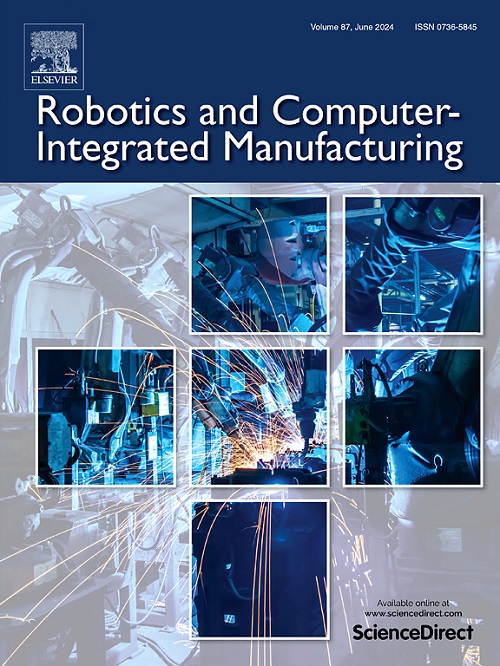Digital twin-enabled robotics for smart tag deployment and sensing in confined space
IF 9.1
1区 计算机科学
Q1 COMPUTER SCIENCE, INTERDISCIPLINARY APPLICATIONS
引用次数: 0
Abstract
The deployment of smart sensors in confined spaces presents significant challenges due to limited visibility, environmental constraints, and communication interference. This study introduces a novel integration of digital twin technology with robotics to address these challenges, enabling precise and reliable sensor deployment in complex environments such as steel box girders. The proposed system leverages a digital twin framework for real-time simulation, calibration, and monitoring, ensuring spatial consistency between virtual and physical operations. Advanced calibration methods align the robotic arm with its 3D camera coordinates, enhancing deployment accuracy. Communication robustness is achieved by strategically prioritizing critical control and sensor signals, mitigating the impact of wireless interference in confined spaces. Additionally, the system automates the deployment of RFID-based smart sensors, incorporating 3D-printed protective casings for durability in harsh conditions. Experimental results demonstrate the system's effectiveness in overcoming spatial, visibility, and communication challenges, providing a scalable solution for structural health monitoring and other industrial applications. This study contributes a holistic and innovative robotics and digital twin integration framework in confined and complex environments.
数字双启用机器人智能标签部署和传感在密闭空间
由于能见度有限、环境限制和通信干扰,在密闭空间中部署智能传感器面临着重大挑战。这项研究引入了一种新的数字孪生技术与机器人技术的集成,以解决这些挑战,使传感器能够在复杂的环境(如钢箱梁)中精确可靠地部署。该系统利用数字孪生框架进行实时仿真、校准和监控,确保虚拟和物理操作之间的空间一致性。先进的校准方法使机械臂与其3D相机坐标对齐,提高了部署精度。通信鲁棒性是通过战略性地优先考虑关键控制和传感器信号来实现的,从而减轻了受限空间中无线干扰的影响。此外,该系统可以自动部署基于rfid的智能传感器,并结合3d打印的保护外壳,以确保在恶劣条件下的耐用性。实验结果表明,该系统在克服空间、可见性和通信挑战方面的有效性,为结构健康监测和其他工业应用提供了可扩展的解决方案。本研究提供了一个完整且创新的机器人与数字孪生在受限和复杂环境下的整合框架。
本文章由计算机程序翻译,如有差异,请以英文原文为准。
求助全文
约1分钟内获得全文
求助全文
来源期刊
CiteScore
24.10
自引率
13.50%
发文量
160
审稿时长
50 days
期刊介绍:
The journal, Robotics and Computer-Integrated Manufacturing, focuses on sharing research applications that contribute to the development of new or enhanced robotics, manufacturing technologies, and innovative manufacturing strategies that are relevant to industry. Papers that combine theory and experimental validation are preferred, while review papers on current robotics and manufacturing issues are also considered. However, papers on traditional machining processes, modeling and simulation, supply chain management, and resource optimization are generally not within the scope of the journal, as there are more appropriate journals for these topics. Similarly, papers that are overly theoretical or mathematical will be directed to other suitable journals. The journal welcomes original papers in areas such as industrial robotics, human-robot collaboration in manufacturing, cloud-based manufacturing, cyber-physical production systems, big data analytics in manufacturing, smart mechatronics, machine learning, adaptive and sustainable manufacturing, and other fields involving unique manufacturing technologies.

 求助内容:
求助内容: 应助结果提醒方式:
应助结果提醒方式:


